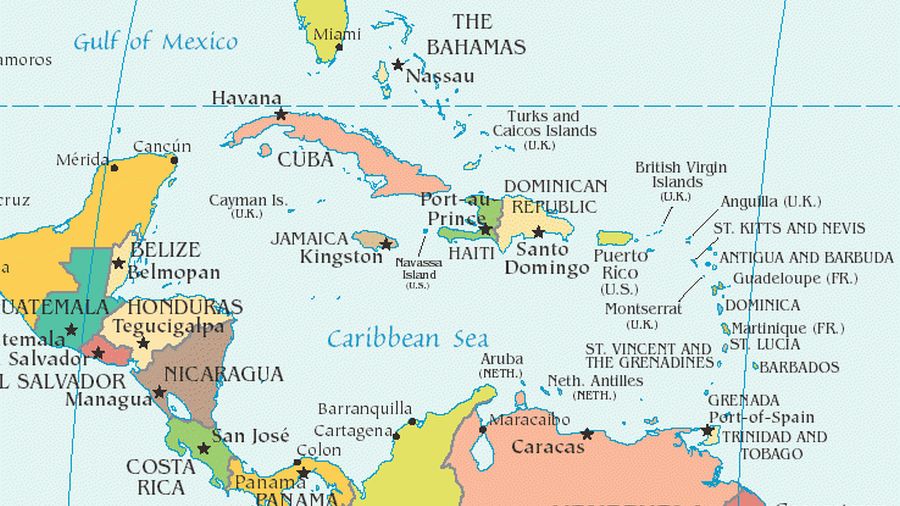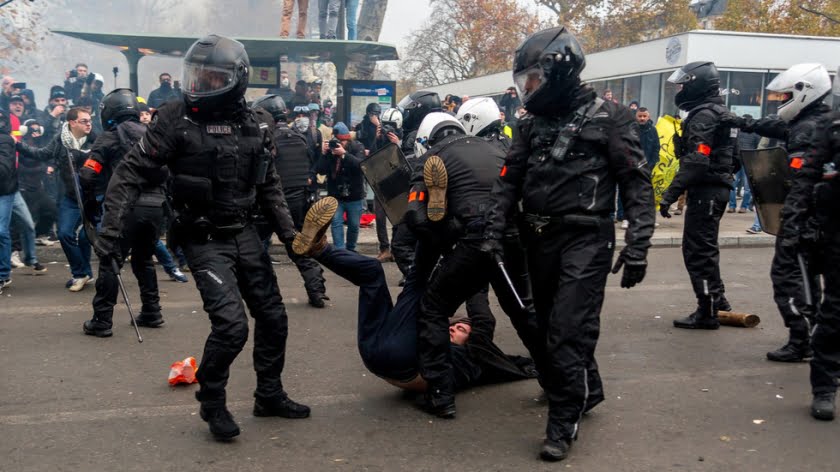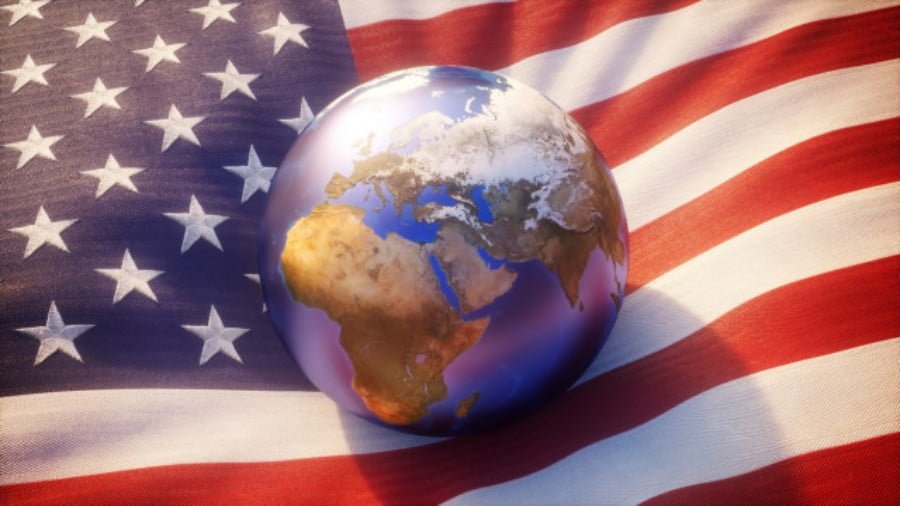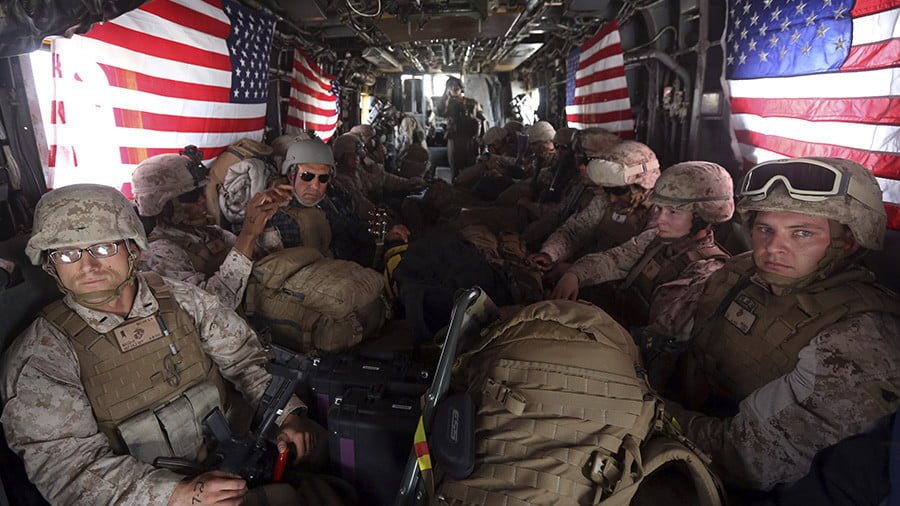The Geopolitical Situation in the Caribbean
The transformation of key processes in world politics and the intensification of Russia’s actions in Latin America forces us to take a closer look at the region in close proximity to the United States – the Caribbean, which is a crossroads for the interests of many major powers.
Most of the subjects in this region belong to small countries, although there are giants such as Mexico and Venezuela. Some are clients of the United States, a number of countries pursue an independent policy and are in friendly relations with Russia. But most prefer to balance one side against the other.
Due to its proximity to the United States, Washington has always treated this region with special attention. In 1983, when the Cold War was still going on, the United States launched the Caribbean Basin Initiative (CBI), which became the cornerstone of economic cooperation between the United States and the Caribbean.
The idea consisted in providing economic assistance to the region in order to make the states of the region reliable satellites. It was a kind of soft power aimed at countering any influence of the Soviet Union and its allies, primarily Cuba. Officially, as now, this was justified by the need to promote and strengthen Caribbean democracies.
The CBI consists of two trade programs for the countries and territories of the Caribbean and Central America: the Caribbean Basin Economic Recovery Act (CBERA) and the US-Caribbean Trade Partnership Act (CBTPA).
Today, the CBI provides benefits for 17 countries under the CBERA, eight of which are also beneficiaries of the CBTPA. The CBERA has no statute of limitations, and the CBTPA has been reauthorised by the US Congress until 2030. The United States provides the Caribbean countries with advantageous access to its market, and also pushes in the direction of liberalising reforms.
In 2016, the United States-Caribbean Strategic Engagement Act was passed, which aims to expand engagement with governments, the private sector and civil society in the region. In the US, they assume that they have not squeezed enough out of the Caribbean yet and are going to identify various focal points for interaction, that is, strengthening their influence.
The United States is the largest trading partner of the Caribbean, and, in turn, the Caribbean is the sixth largest trading partner of the United States, with $35.3 billion passing between them annually. In 2017, the region was the third largest export market for US manufactured goods in Latin America after Mexico and Brazil.
However, outside of the Dominican Republic-Central America Free Trade Agreement (CAFTA-DR), Caribbean countries do not have bilateral free trade agreements with the United States, having access to US markets only under the CBI.
US military presence
The United States continues to be the Caribbean’s main partner in security cooperation. The region is home to seven key US military bases that are part of the United States Southern Command (SOUTHCOM), and security has been a core element of US strategy in the Caribbean. [i] Active US bases in Latin America are known as “Forward Operation Locations” (FOL) or “Cooperative Security Locations” (CSL).
Paradoxically, one of the bases is located in Cuba – in Guantanamo province and, in fact, represents the illegal occupation of the Republic since 1959. In Honduras there is a Palmerola/Soto Cano base, where there are about 500 US military men + 600 civilian contractors (including Honduran citizens).
In El Salvador, planes of the US Navy and the Drug Control Service use the Comalapa international airport. The garrison that is located there is part of the structure of the joint interdepartmental group based in Key West, Florida. The islands of Curaçao and Aruba, which are overseas territories of the Netherlands, have provided their territories for the American military presence.
The US military is assisted by the Dutch Coast Guard. The US military base in Antigua has existed since the Second World War. Now the US Air Force is leasing the site from the government of Antigua. There is a centre for testing new types of weapons on Andros Island in the Bahamas. It is associated with the US Navy, but other NATO members – Canada, Denmark, Germany, Greece, Italy, Norway, Britain – are regularly on its territory. Finally, the US military uses Vasco Nunez de Balboa, the main port in Panama, on a regular basis for refuelling ships and unloading/loading. [ii]
Off the coast of Panama, the US military has been constantly conducting PANAMAX military exercises since 2003 under the pretext of ensuring the safety of the channel’s operation. Interestingly, there have never been any threats to the channel. [iii]
The USSOUTCOM strategy for 2017-2027 states that potential challenges in the future include trans-regional and transnational threat networks that include traditional criminal organisations, as well as the expanding potential of extremist organisations such as ISIS and Hezbollah operating in the region using weak institutions of the Caribbean and Latin America. USSOUTHCOM also notes that the region is “extremely vulnerable to natural disasters and outbreaks of infectious diseases” due to problems with governance and inequality.
Finally, the report acknowledges the growing presence of China, Iran and Russia in the region and that the intentions of these countries challenge “every nation that values non-aggression, the rule of law and respect for human rights”. [iv] These problems were used as a pretext to strengthen relations between the United States and the governments of several countries in the region.
Within this framework, the Caribbean Basin Security Initiative (CBSI) is a joint security partnership that supports cooperation in the areas of combating human trafficking, crime prevention and citizen security initiatives.
In the period from 2010 to 2018, more than $556 million was spent under the program. The program focuses on cooperation at sea and in the air, capacity-building of law enforcement agencies, border and port security, judicial reform and crime prevention among at-risk youth. It involves the Bureau of International Narcotics and Law Enforcement Affairs, the Department of Defence and the US Agency for International Development.
The role of China, the interests of Russia and other countries
It is important to note that in the period from 2002 to 2019, the region’s trade turnover with China increased eight-fold – from $1 billion to $8 billion. Despite the existence of the China-Caribbean Economic and Trade Cooperation Forum, trade relations are mainly carried out on the basis of bilateral agreements that allow China to export mainly high-value industrial goods.
Trade through Chinese markets, however, remains largely one-sided; CARICOM does not have a preferential access agreement with China, which still has a huge trade surplus in the region. Thanks to its growing presence in the Caribbean, China has increasingly attracted Taiwan’s long-time trading partners in recent years, even despite the fact that Taiwan continues to offer bilateral free trade agreements in the struggle for influence.
Four of the 15 countries that recognise Taiwan are in the Caribbean. However, these countries still have a significantly larger volume of trade with their mainland Chinese competitors, as Taiwan attracts its allies in the region mainly through investment and foreign aid.
Trade between Mexico and the CARICOM countries is also relatively insignificant. As for Mexico, trade with Caribbean countries accounts for less than 0.1% of its international trade portfolio. Collectively, other Latin American countries also have minimal trade with the CARICOM countries: the CARICOM countries exported $2.2 billion to Latin America and imported $3 billion from the region in 2019.
The volume of trade between the CARICOM countries and Canada is also small. These economic relations are governed by the Caribbean-Canada Trade Agreement (CARIBCAN), which provides Caribbean countries with duty-free access to Canada unilaterally as part of an initiative similar to the CBI initiative. However, despite numerous negotiations, the Caribbean states have yet to conclude a formal free trade agreement with Canada, as well as with the European Union.
In 2008, the Caribbean Forum signed the CARIFORUM-EU Economic Partnership Agreement, giving each region preferential access to the other one. The European Union is CARIFORUM’s second largest trading partner after the United States, mainly importing Caribbean fuel and mining products.
In 2010, Russia and CARICOM signed a Memorandum of Understanding and established a mechanism for political dialogue and cooperation. And this legal framework of interaction is expanding. [v] In 2013, Russia wrote off a debt of $277 thousand to Guyana, and in 2015, an agreement was signed on the restructuring of Grenada’s debt.
During the consideration of the Crimean issue at the UN in 2014, where the return of Crimea to the bosom of Russia was assessed, most of the Caribbean countries took a neutral side. These states were Antigua and Barbuda, Jamaica, Guyana, Suriname, Dominica, Saint Kitts and Nevis, Saint Lucia and Saint Vincent and the Grenadines. Only a few countries voted against Russia, among them, traditionally pro-American, such as Barbados, the Bahamas, Haiti and Trinidad and Tobago. [vi]
Since 2018, all Caribbean countries have become visa-free for Russian citizens.
On July 27, 2019, Russian Foreign Minister Sergey Lavrov, during a visit to Suriname, noted the interest of the Caribbean Community countries in increasing cooperation and political dialogue with Moscow: “We have a mutual interest in increasing cooperation, including political dialogue, between members of the Caribbean Community and Russia.” [vii]
According to the statement of the Russian Ambassador to Guyana Nikolay Smirnov, concurrently representing our country in Barbados, Grenada, Trinidad and Tobago, Saint Vincent and the Grenadines, “the countries of the Caribbean region support the concept of multipolarity with the coordinating role of the UN, the rule of international law and the principle of non-interference in the internal affairs of other states.
And their voices have a certain weight on international platforms, especially since they often take a consolidated position on the most important issues on the international agenda – whether it is the implementation of the provisions of the Paris Climate Agreement, the lifting of the trade and economic embargo against Cuba or the need to resolve the crisis in Venezuela without external pressure and interference.”[viii]
Russia has a conditional military presence in the region only in Venezuela and Nicaragua, where there are advisers and instructors. In Nicaragua, Russia is also helping to fight organised crime, in particular, attempts to use this country as a transit of drugs.
The region’s proximity to the United States makes it a major route of illegal activity, especially for Colombian and Mexican criminal organisations that collaborate with local groups for drug trafficking throughout the Caribbean. But recently, drug shipments have also been sent directly to Europe through the ports of Colombia and Brazil.
The development of energy may also be of some interest. Only three Caribbean countries – Guyana, Suriname and Trinidad and Tobago – are net exporters of energy resources, while the rest are heavily dependent on imports of petroleum products. [ix] Trinidad and Tobago is a major supplier of energy resources to the region, but is facing a decline in oil revenues due to falling world prices.
According to recent data from international oil companies, Guyana and Suriname are also ready to become serious players in the exploration of hydrocarbons in the region. Guyana’s reserves, which began production in 2019, are estimated at 10 billion barrels, making it the host for one of the 50 largest oil basins in the world.
Guyana is a member of the British Commonwealth and is the only English-speaking country on the continent. In addition, Britain has its own territories in the region – Anguilla, the British Virgin Islands, the Cayman Islands, Montserrat – all part of the Lesser Antilles, once discovered by Christopher Columbus and conquered from Spain.
Trinidad and Tobago has long been the largest producer of liquefied natural gas (LNG) in the Caribbean and is the sixth largest LNG producer in the world, making it the only island nation in the region that is not a net energy importer.
It is also believed that the Caribbean has a huge potential for the transition to green energy, given its abundance of solar, wind, volcanic geothermal energy and (under limited conditions) opportunities for tidal power generation and hydropower.
It seems that a more active position of Russia in the region, as well as participation in various economic and infrastructure projects, could help to increase the status and role of Moscow and favour the further expansion of its political and even military-political presence.
[I] https://www.coha.org/the-u-s-militarys-presence-in-the-greater-caribbean-basin-more-a-matter-of-trade-strategy-and-ideology-than-drugs/
[ii] https://www.state.gov/wp-content/uploads/2019/12/WHA-US-Caribbean-2020-Report-web.pdf
[iii] https://www.navaltoday.com/2016/07/26/panamax-military-exercise-kicks-off/
[iv] https://web.archive.org/web/20170622051944/http://www.southcom.mil/Portals/7/Documents/USSOUTHCOM_Theater_Strategy_Final.pdf?ver=2017-05-19-120652-483
[v] https://interaffairs.ru/news/show/23281
[vi] http://vestnik.bukep.ru/articles_pages/articles/2014/2014-4/Articles_362-365.pdf
[vii] http://caribbean-russia.com/frend
[viii] https://iz.ru/668332/nataliia-portiakova/kariby-i-rossiia-podderzhivaiut-kontceptciiu-mnogopoliarnosti
[ix] https://data.worldbank.org/indicator/EG.FEC.RNEW.ZS?locations=S3







